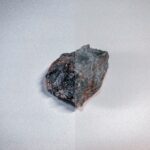Are you fascinated by prehistoric life and the mysteries it holds? Curious about the secrets that lie within fossilized remains? If so, you’re in for a treat! In this article, we will delve into the captivating world of fossil research and analysis. As an experienced and passionate fossil researcher, I have dedicated my career to unraveling the wonders of prehistoric life. Join me as we explore the techniques, tools, and discoveries that enable us to piece together the intricate puzzle of evolutionary history. Get ready to embark on a fascinating journey into the past, where ancient creatures come to life through the art of scientific analysis. Let’s dive into the realm of fossil research and analysis and unlock the secrets that have been buried for millions of years.
Fossil Research and Analysis: Revealing the Secrets of Prehistoric Life
Welcome to the captivating world of fossil research and analysis! As a seasoned fossil researcher, my mission is to unlock the mysteries of prehistoric life by carefully examining the remains of ancient organisms. Through the fascinating field of paleontology, we gain insight into Earth’s history, the evolution of life, and even ancient climates.
So why are fossils so important? Fossils are like magnificent time capsules, preserving the remnants of organisms that lived on Earth long before humans roamed the planet. From colossal dinosaurs to tiny microorganisms, these ancient relics provide us with glimpses into the past, allowing us to piece together the puzzle of our planet’s history.
To properly delve into the wonders of fossil research and analysis, we must first understand how paleontologists gather these precious remnants. Paleontologists cover vast landscapes, exploring various environments and carefully excavating sedimentary rock layers. By investigating different areas and strata, they unveil the secrets that have been hidden for millions of years.
One crucial aspect of fossil research and analysis is understanding the age of these remnants. This task can be quite challenging, as fossils are typically dated based on their position in rock strata. Sometimes, these findings may even challenge established evolutionary timescales. However, through meticulous examination and the use of advanced dating techniques, paleontologists can estimate the age of fossils with reasonable accuracy.
Unraveling the age of fossils is like piecing together a jigsaw puzzle, but with each fossil, a clearer picture of our planet’s ancient inhabitants emerges.
Not only do fossils provide us with insights into the organisms that once thrived on Earth, but they also shed light on the climates of bygone eras. Embedded within these fossils are clues about the environmental conditions that shaped the Earth millions of years ago. By carefully analyzing these indications, paleontologists can paint a vivid picture of the past, allowing us to grasp the astounding diversity of ancient life.
Fossils are like time-traveling ambassadors, carrying us back through the ages to witness the awe-inspiring tapestry of life that unfolded on our planet.
As a passionate fossil researcher, I have witnessed firsthand the transformative power of scientific analysis in this field. By employing cutting-edge techniques and tools, we are able to delve deep into the intricate details of fossils, uncovering hidden clues and unraveling the mysteries they hold. Through years of experience and a strong foundation in paleontology, my expertise lies in identifying, categorizing, and dating fossils with precision.
With a keen eye and unwavering dedication, fossil research and analysis pave the way for groundbreaking discoveries, opening windows to worlds long past.
While the research process can be complex, my goal is to bridge the gap between scientific jargon and public understanding. I want to make the wonders of fossil research and analysis accessible to everyone, transcending the realm of academia. By translating intricate research into engaging articles, I aim to ignite a spark of curiosity in readers, allowing them to appreciate the wonders of evolutionary history.
Join me on this captivating journey where science unearths the enigmatic treasures of prehistoric life and the fascinating story they have to tell. Together, we will unveil the remarkable secrets hidden deep within the rocks and fossils that grace our planet.
Fossils are a fascinating window into the ancient world, and there is no better place to learn about them than Wikipedia. If you’re looking for interesting and detailed facts about fossils, head over to our page on the topic. From the different types of fossils to the techniques used in their study, you’ll find a wealth of information that will leave you in awe of our planet’s history. So why wait? Click here to explore the amazing world of fossils on Wikipedia: facts about fossils wikipedia.
FAQ
Question 1: What is paleontology?
Answer: Paleontology is the study of ancient organisms and climates based on their preserved remains, known as fossils.
Question 2: What do paleontologists do?
Answer: Paleontologists are individuals who find and examine fossils in different environments and rock layers to understand the organisms that lived on Earth before human life evolved.
Question 3: How do paleontologists determine the age of fossils?
Answer: The age of fossils is determined by their position in the rock strata. This can sometimes challenge evolutionary timescales, but it is a crucial aspect of fossil analysis.
Question 4: What information can fossils provide?
Answer: Fossils provide valuable insights into the organisms that lived on Earth before humans, as well as the ancient climate and geological processes that shaped our planet.
Question 5: What are the oldest known fossils?
Answer: The oldest known fossils are 3,500,000-year-old bacteria, which provide important glimpses into early life forms and the history of our planet’s evolution.
















